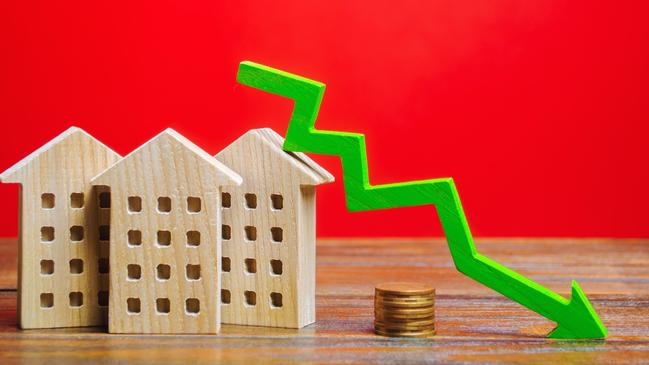Facing the mortgage cliff? You do have choices
The doubling of mortgage rates in a short space of time hits home borrowers hardest – but there are options to explore.

In 2020, the interest rate on fixed-rate home loans dipped below 2 per cent and thousands of Australians seized on the opportunity to fix their mortgages at this historic low point.
Remember, we had a recession in 2020, so low interest rates made sense at the time as the RBA tried to stimulate economic activity.
As we moved out of Covid-19 in early 2022 and inflation rose, everyone knew that the RBA had to increase the cash rate back to normal levels, but few expected it to happen so fast and so aggressively.
Fast forward to late 2022 and those who fixed their loans are approaching a “mortgage cliff” where their circa 2 per cent interest rate is about to expire and revert to a variable rate of between 4 and 4.5 per cent interest.
In other words, this substantial segment of the market is facing a doubling of interest payments.
And if they wish to “refix” their interest rate, the going rate for a fixed-rate loan is 5 to 5.5 per cent – which is even higher than the current variable rate.
This is no surprise given the RBA cash rate is forecast to rise another 1 per cent or so before we reach the top of the current cash rate cycle.
Many Baby Boomers will have little sympathy for today’s mortgage holders because they have lived through periods of high interest rates.
Back in January 1990, the RBA’s cash rate hit 17.5 per cent so today’s RBA cash rate of 2.6 per cent pales in comparison.
However, for Gen X and Gen Y, this is the first time they have seen the interest cost of their mortgage rise.
To make the problem of the “mortgage cliff” worse, many home-loan borrowers took out the biggest mortgages they could possibly get on the basis that the RBA stated the cash rate would not increase until 2024.
Like a trainwreck happening in slow motion, people can see the cliff looming.
Many are preparing for it, while others have accepted their fate and will ride out the higher interest rates hoping that inflation peaks earlier than expected and the RBA cuts their rate rising cycle short.
What to do
• To get ahead of the mortgage cliff, I have seen several clients sell their home and downgrade to cheaper property knowing they simply will not be able to sustain mortgage repayments when their interest rate doubles.
• A more aggressive approach has been to double down, using the equity in their homes to purchase an investment property in regional locations where they can potentially achieve gross rental yields above 7 per cent and generate passive income to help pay their higher home-loan repayments.
But this approach is fraught with danger and strongly advised against. What if the investment property is not tenanted for 6 months? The cashflow problem has been made worse rather than improved and as such, someone who has cashflow problems should not take on even more debt in the hope that it will improve their situation.
There is simply too much that could go wrong.
• Another approach from those facing the cliff has been to inquire about moving their home loan from principal-and-interest repayments to interest only, to get through the tough period and eventually move back to principal and interest when rates come back down.
After those three main choices, it comes down to related options to improve cashflow in these tight times – including temporarily reducing salary sacrifice arrangements into super; or doing a full review of household spending and cutting discretionary spending such as dining out and holidays.
Taking on a second job may also have to be considered to keep the family home at all costs.
Moving out of the family home temporarily and renting a cheaper property to improve cashflow is another option, albeit a drastic one requiring an upheaval of one’s life.
Nonetheless, some investors believe it is simply becoming urgent and they are making dramatic moves.
According to Jim Devonport, Sydney-based FX broker at Forex Worldwide, mortgage holders
have also started to move money from their various hiding holes back to the home-loan account to reduce interest costs.
He says: “I have seen a spike in activity from migrants and expats, who still maintain bank accounts overseas, bringing back their ‘rainy day funds’ to Australia.
“In particular, with the attractive currency rates relative to the Australian dollar, the lion’s share of transfers has been from the UK and USA.”
Forecasts indicate that the property market will continue to slide across major capital cities, meaning a double hit for homeowners.
Not only will they have ongoing increases to their interest bill each month, but the value of their homes may continue to fall.
It’s a tough market and the forecasts suggest it will stay tough for some time but, as an investor, keep in mind there are always things you can do to improve your situation.
James Gerrard is principal and director of Sydney financial planning firm financialadvisor.com.au


